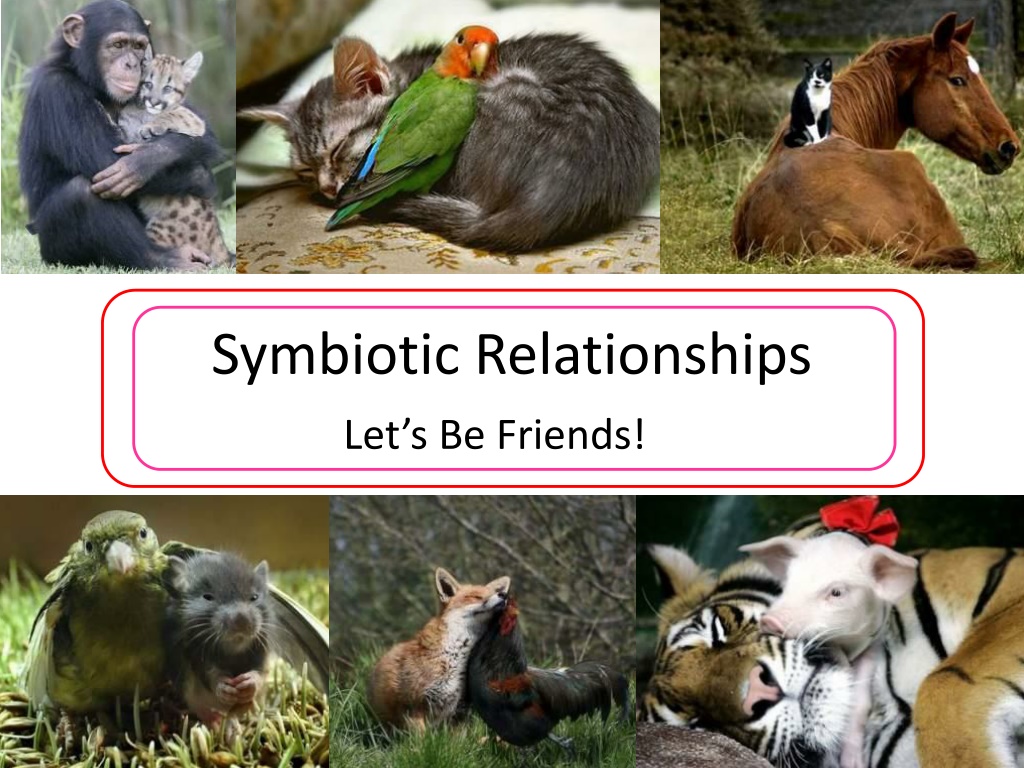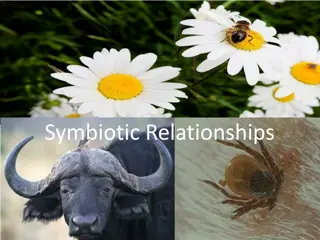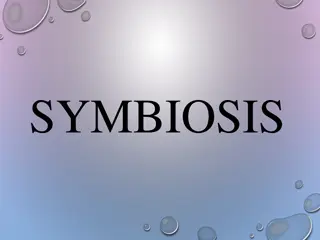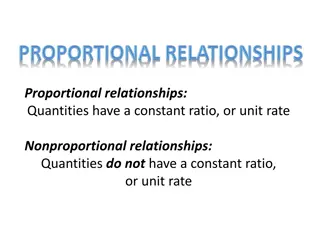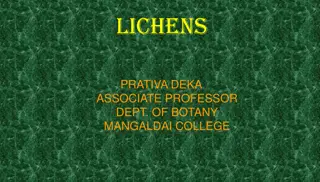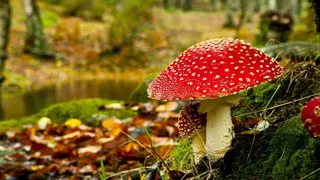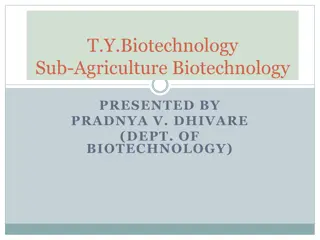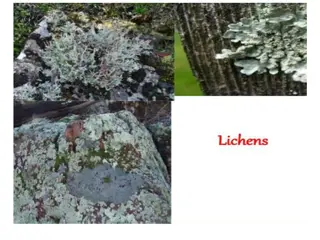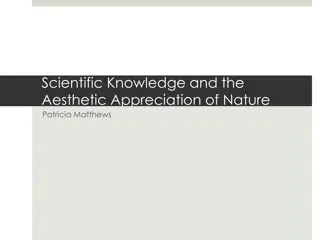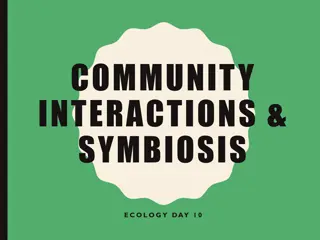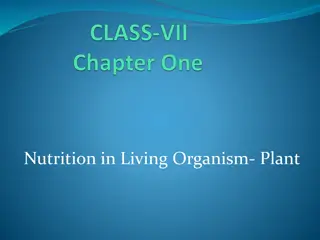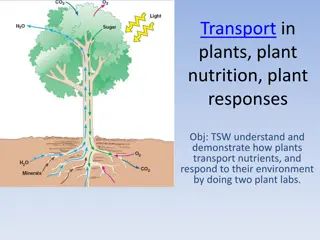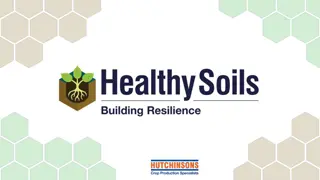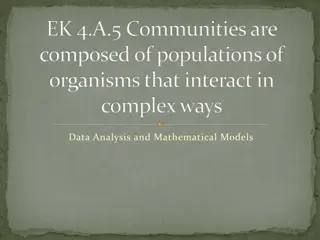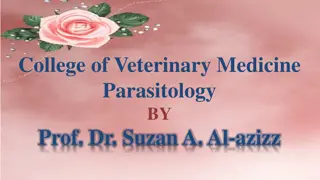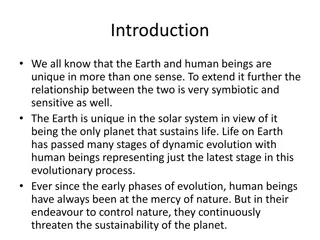Understanding Symbiotic Relationships in Nature
Symbiotic relationships are intricate connections between different species where they benefit from each other. Mutualism, commensalism, and parasitism showcase the diverse ways organisms interact. Examples like decorator crabs with sponges, proboscis butterflies with flowers, and barnacles on whales illustrate these relationships in action.
Download Presentation

Please find below an Image/Link to download the presentation.
The content on the website is provided AS IS for your information and personal use only. It may not be sold, licensed, or shared on other websites without obtaining consent from the author. Download presentation by click this link. If you encounter any issues during the download, it is possible that the publisher has removed the file from their server.
E N D
Presentation Transcript
Symbiotic Relationships Let s Be Friends!
Symbiosis derives from the Greek words for living & together . Symbiosis is the close interactions or relationship between two organisms of differing species where one or both organisms can benefit. Remora
There are four different types of symbiotic relationships: mutualism parasitism commensalism amensalism but not all of them are favorable interactions!
Mutualism When both individuals of different species benefit from the relationship. Decorator Crabs & Sponges Decorator crabs decorate their shells with bits of living sponges to act as a camouflage from predators. The sponges continue living on the crab s shell and are exposed to feeding opportunities when the crab moves around. Both individuals benefit!
Mutualism Proboscis Butterflies & Flowers Flowers produce nectar (a sugary liquid) that contains nutrients for butterflies. As butterflies feed through their hollow tube like organ called proboscis, they pick up pollen on their feet and legs. When they travel to other flowers to continue feeding they transfer that pollen which serves to pollinate the flowers resulting in the formation of seeds. As the butterflies get nutrients they need they also help flowers reproduce.
Commensalism Only one organism benefits from the relationship while the other is unaffected, neither helped nor harmed. Barnacles & Whales Mature barnacles are unable to move so they attach themselves to whales while they are young and mobile. As the whales swim around, the barnacles reaps great reward in the form of many opportunities to feed due to its filter-feeding nature. Whales are neither hurt nor gain anything from the relationship.
Commensalism The Imperial shrimp utilizes the sea cucumber for its locomotive purposes. The shrimp hangs on tight through waters filled with the shrimp s food source and only let go to have a bite. After the shrimp is finished eating it climbs back aboard the sea cucumber to travel to it s next feeding ground. The sea cucumber receives no benefit or harm from this hitchhiker.
Parasitism In this relationship, one organism is harmed while the other benefits. In this relationship each organism has a specific name The host is the organism that is harmed by the other. The parasite is the organism that benefits from the other.
Parasites Parasites are defined as organisms that live in or on another organism (host) and benefit at the host s expense. Tapeworms Tapeworm eggs are carried around by fleas. When fleas bite your cat or dog they can transfer the eggs over to hatch. The tapeworms will grow and live inside the intestines of their hosts as they steal nutrients meant for the host. This can lead to malnourishment or starvation for the host.
Parasites Parasites are categorized into two types: 1. Biotrophic parasites that rely on their host's surviving. Head lice can infest our hair and suck blood from our scalp to feed. This leads to blood loss and itching for the host but food and shelter for the lice. If this pairing proved fatal for us the lice would no longer receive nourishment, this makes them biotrophic parasites who depend on our survival. Head Lice Louse
Parasites 2. Necrotrophic parasites that kill their host. In this instance of parasitism, the tomato hornworm is covered with cocoons of pupating braconid wasps. The braconid wasp lays its eggs under the skin of tomato hornworms and as the pupating wasps grow they feed on the hornworm which die from this relationship. Cocoons Braconid wasp Tomato hornworm
Parasites vs. Predators An important distinction must be made between parasitic relationships and the predator/prey relationship! Parasites rely on their prey for food only. Predators intent to kill their prey. Parasites rely on hosts for food, shelter, and sometimes a means for reproduction. Besides the nectrophic parasites, parasites depend on their host s survival for their own. An exception to this is the mosquito. Mosquitos, a predator, depend on their prey to survival for a continued source of food but they do not rely on their prey for shelter.
Amensalism Relationship in which one organism is unaffected while the other is harmed or completely obliterated. A small tree sapling growing next to or under a fully grown tree will not receive enough nutrients, water, or sunlight to grow as the larger tree overshadows it and has a more extensive root system. The sapling will die while the larger tree is ultimately unaffected by the sapling s presence.
Amensalism The bread mold Penicillium secretes an antibiotic called penicillin which can stop the growth of or even kill certain bacteria. This allows penicillin to be used as a medication in humans because it only hurts bacteria. In this instance, the penicillium is neither harmed nor benefits from the bacteria s presence but the nearby bacteria are destroyed.
Symbiotic relationships can be classified into two different categories: Endosymbiosis where one organism lives completely inside the other organism unseen Ectosymbiosis where one organism lives outside on the surface of the other organism and can be seen Tapeworms grow inside their host. The parasite mistletoe grows on the outside of its host.
Symbiotic Relationships Review Mutualism Commensalism Parasitism Amensalism Organism 1 Organism 1 Organism 1 Organism 1 Benefits! Benefits! Benefits! Neutral Organism 2 Organism 2 Organism 2 Organism 2 Benefits! Harmed Neutral Dies
What Symbiotic Relationship is this? The Remora, also known as suckerfish has a oval sucker-like organ with slats which the remora can open and close to create suction. They use it to hold firmly onto the skin of large marine animals (whales, sharks, manta rays, turtles, and dugongs). By sliding backwards they increase the suction and by sliding forward they can be released. Remoras sometimes attach to small boats and scuba divers. The remoras get a free ride by attaching to larger animals and can eat the scraps of food left over while the larger animal is unaffected. What symbiotic relationship is this? Remora Sucker s slats
What Symbiotic Relationship is this? One of these things is not like the other Cuckoo birds will lay their eggs in other birds nests. These other birds are tricked into thinking it is one of their own eggs and will raise the chick. Cuckoo eggs hatch earlier and the chicks grows faster allowing the cuckoo to receive more food. Baby cuckoos will even push the real baby birds out of the nest to reduce competition for food. In this relationship the mother cuckoo has a chick without having to feed or take care of it while the tricked mother bird can often work itself to exhaustion trying to keep up with feeding all the chicks in addition to losing her real chicks. What symbiotic relationship is this? Not much of a family resemblance
What Symbiotic Relationship is this? Capybaras are large semi-aquatic rodent living in South America. Certain birds will ride on top of Capybaras to eat the insects that get dispersed by the capybara and in exchange groom the capybara by eating parasites and ticks from its fur. What symbiotic relationship is this? Capybara Surfing
What Symbiotic Relationship is this? Spiders build their webs along plants, using their stalks, branches, and leaves as support structures upon which to hang their web. The plants are receive no benefit or any harm from the spider s presence. What symbiotic relationship is this?
Vocabulary Review Symbiosis Mutalism Parasitism Commensalism Amensalism Parasite Host Biotrophic Necrotrophic Endosymbiosis Ectosymbiosis
Why Study Symbiotic Relationships? An ecologists is a biologist who studies the relationship between organisms and their environment. There are many fields in ecology, including animal behavior, population biology, conservation biology, and marine ecology. Within these fields are many amazing careers to pursue on land and sea. Ecologists must be curious about how life works on earth. They use symbiotic relationships to classify the interactions that differing organisms have when studying different ecosystems. Ecologists work to understand the roles each animal plays and study the effects of chemicals or other stresses on plants and animals to recommend different methods to solve ecological problems. They also teach students and adults about nature, new discoveries, and the ecological problems we are facing today. Sound interesting? Let s be friends! No!!
